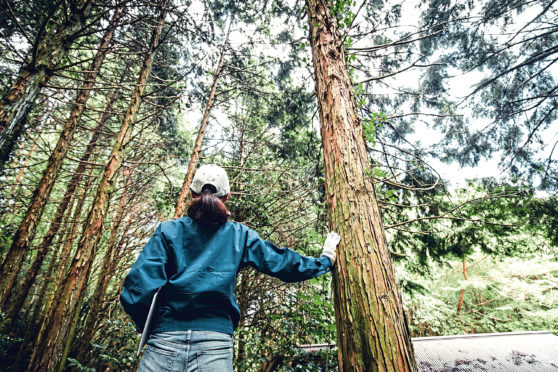Despite the challenges of Brexit, Scotland’s economy continues to grow, advancing 0.3% in the final three months of 2018.
When we think about the country’s growth sectors, we automatically think about food and drink, technology and engineering, financial services, life sciences, and the creative industries. But spare a thought for the forestry and timber processing sector, which can only be described as a hidden gem of the country’s economic landscape.
In 2015, a report commissioned by the then Forestry Commission Scotland estimated the sector employed around 25,000 people in Scotland and its contribution to the Scottish economy was worth around £1 billion GVA. This is projected to grow to £2 billion GVA by 2030 through a combination of timber production/processing, recreation and tourism.
Alongside this, new woodland is being planted all the time as part of the Scottish Government’s response to reducing the amount of harmful greenhouse gases in the atmosphere – and achieving its Net Zero 2050 target – and providing sustainable building materials to meet the country’s growing housing needs.
But with the drive to plant more trees, and harvest and process more home grown timber, comes a unique challenge. The sector’s workforce is ageing and it is estimated around 70% will need replaced over the next 10 years.
This skills shortage has been recognised by the Scottish Government, which recently brought together a wide range of stakeholders from the public and private sector for two Forestry Skills Summits, one which took place at Inverness College UHI. In the next month, a report quantifying the prospective skills and workforce gaps will be produced by Scottish Forestry and the Timber Technologies Industry Leadership Group, which will bring more focus to the unique challenge ahead.
At the Scottish School of Forestry, part of Inverness College UHI, we’ve been delivering training for over 45 years. We’ve been a part of those changes in the sector and seen the demand for graduates soar. The Scottish School of Forestry is in a unique position to respond to both the challenges and the opportunities this projected growth represents. Offering programmes for senior phase secondary school pupils right through to our honours degree in forest management, we are the only provider of further education and higher education forestry programmes in Scotland.
Our programmes are closely link with our industry partners, who ensure the curriculum remains current, fit for purpose and relevant through guest lectures, awards, site visits and work placements, ensuring our graduates leave ready to fill the skills gap in the sector.
But, the big question is, how do we encourage people to join the industry, whether they are school leavers or career changers? Forestry, like other rural land based sectors, suffers from negative connotations that it’s all lumberjacks with beards, flannel shirts and chainsaws. Nothing could be further from the truth. Of course, there’s lots of manual work, but in reality today’s harvesting sector is heavily technology driven, requiring a high degree of skill and technical expertise. But it’s more than just that. The sector also needs a workforce that is diverse and provides excellent opportunities for people with a wide range of skills and interests, whether that’s practical outdoor work, or technical management, scientific research or conservation.
This includes tree breeders and growers to work in nurseries; forest managers who understand soils and what trees to plant in any given location; harvesting managers who can accurately measure timber and how to manage that process safely; ecologists to make sure we discharge our responsibilities for looking after the environment; and recreation rangers who can help people get the most enjoyment out of their visit to our forests.
Our programmes have been designed so they provide the opportunity for both face to face and distance learning and the flexibility to study part-time and exit and enter at any point. We also offer the apprenticeship route for those looking to work in the industry and study. Our students get jobs, often well paid with excellent career opportunities straight out of their studies.
In many ways, forestry is a hidden success story. It’s time we moved away from the stereotype and get the message out that forestry is a growing, dynamic, forward thinking sector, driven by technology but grounded in sustainability. It’s a sector for the future, not the past, with a workforce helping save the planet one tree at a time.
Amanda Bryan, head of the School of Forestry at Inverness College UHI










